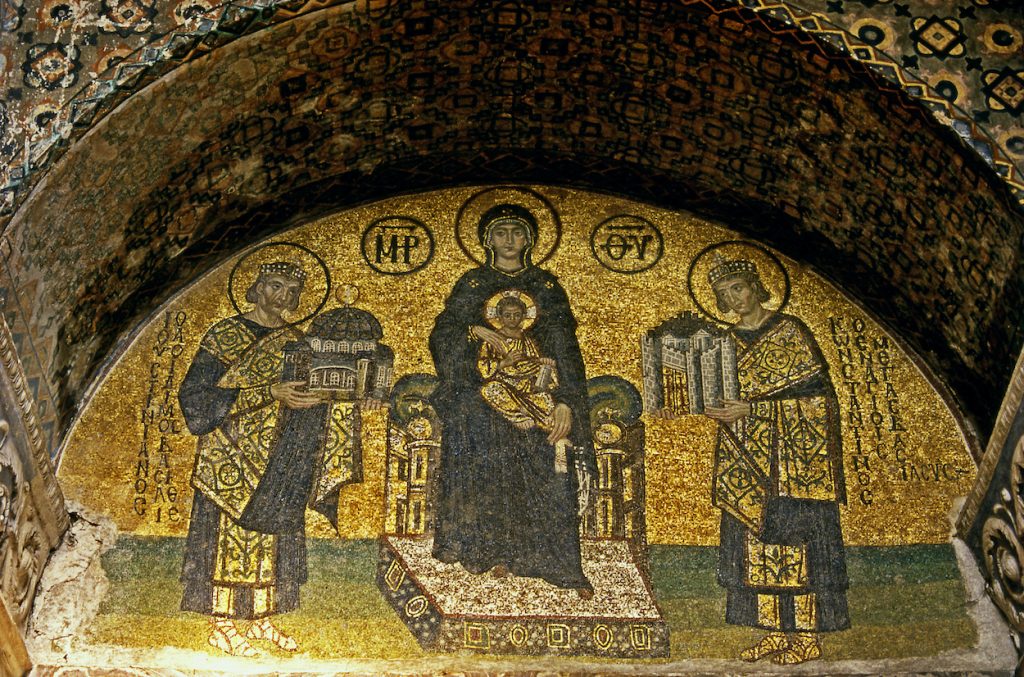An Immortal Monument: The Journey of Hagia Sophia through Time
Table of Contents
Greetings to all travel and history enthusiasts! Today, I invite you to embark with me on an exploration of an iconic monument that has witnessed the passage of time like no other – the Hagia Sophia, or as it’s known locally, Ayasofya. An integral part of Istanbul’s skyline, Hagia Sophia’s grandeur has endured for 1500 years, bearing silent testament to the ebbs and flows of civilizations.
A Testament to Divine Wisdom
Not to be mistaken for a church dedicated to a saint named Sophia, Hagia Sophia is a combination of two Greek words, Hagia and Sophia, translating to ‘holy wisdom.’ It is a symbol of divine wisdom, a tribute to Jesus Christ.
The Life of Hagia Sophia: A Historical Saga
The first rendition of Hagia Sophia was a modest building with a wooden roof, erected under Constantine the Great’s rule and completed by his son. After a riot resulted in its destruction, Emperor Theodosius II rebuilt it in the 5th century. However, the second incarnation of Hagia Sophia was also short-lived, ultimately falling to the Nika revolt in 532.
Emperor Justinian, having suppressed the revolt, stood amid the ruins with a dream to construct the world’s largest temple. He commissioned two renowned architects, Anthemius and Isidorus, who hailed from the areas of Ephesus in the Aegean region. The new building, completed in 537, was truly a testament to their combined architectural brilliance and the young emperor’s grand vision.
The Hagia Sophia served as a church for 916 years before its transformation into an imperial mosque in 1453. The transformation was overseen by the then 21-year-old Ottoman Sultan Mehmet II, who added many Islamic features while respecting the building’s historic significance. Ayasofya turned into an impressive Ottoman complex over time, with additions like kitchens for the poor, a theology school, and a royal cemetery.
Hagia Sophia’s history is imbued with riveting tales of empires, revolutions, and power transitions. A vital landmark for the Eastern Roman Emperors, Hagia Sophia bore witness to coronations, victory celebrations, and also tense relations between the Roman Catholic and Greek Orthodox Churches.
With the Turks, Ayasofya was shaped into a sanctuary where the Ottoman sultans prayed and many were buried in its courtyard. Through centuries of change, the monument transitioned from a church, then to an imperial mosque, a museum in the 20th century, and eventually back to a mosque recently. Despite these transformations, Hagia Sophia’s architecture and spirit remain indomitable.
The Architectural Wonder
One of the captivating aspects of Hagia Sophia is its groundbreaking architecture. Built three times, it showcases a spectacular structure of unparalleled size. Its dome, over 55 meters high, akin to a 17-floor apartment building, was an ambitious and revolutionary architectural feat during its time. This monumental marvel has defied time and survived natural disasters, retaining its glory for 1500 years.
 The Mosaics: A Marvel of Byzantine Art
The Mosaics: A Marvel of Byzantine Art
No account of Hagia Sophia is complete without mentioning its stunning mosaics. Hagia Sophia houses some of the world’s most well-preserved mosaics, reflecting the faces and emotions of Byzantine history with striking detail. Each of these masterpieces tells a tale from the past, from Emperor Justinian offering his church to Jesus Christ to Emperor Leo VI seeking forgiveness.
Each mosaic is a testimony of extraordinary craftsmanship, presenting a plethora of emotions, stories, and symbolism.
Hagia Sophia: More than just a monument
Today, Hagia Sophia stands as more than just an architectural masterpiece. It’s a symbol of cultural and religious diversity, bearing the marks of both Byzantine and Ottoman eras. Its conversion into an imperial mosque led to the addition of minarets and an architectural fusion, mirroring the transition from one empire to another.
As a museum, and recently a mosque again, it’s a cultural hub that attracts millions of visitors each year. And the beauty of it all? It’s open to both worshippers and visitors, encapsulating centuries of history under one colossal dome.
The Impact and Influence
 Hagia Sophia’s architectural prowess influenced numerous other structures, including the classical Ottoman architecture initiated by Architect Sinan. Its design elements are mirrored in masterpieces like the Süleymaniye mosque, attesting to its timeless influence.
Hagia Sophia’s architectural prowess influenced numerous other structures, including the classical Ottoman architecture initiated by Architect Sinan. Its design elements are mirrored in masterpieces like the Süleymaniye mosque, attesting to its timeless influence.
In its resilience and grandeur, Hagia Sophia represents the spirit of Istanbul, a city where the East meets the West, and history coexists with the present.
Visiting Hagia Sophia is not just a journey through time; it’s an immersive experience into the heart of human history and a testament to mankind’s artistic and architectural prowess. As you walk its marble floors and gaze at the captivating mosaics, you can almost hear the echoes of the past.
Finally, let me add this; Hagia Sophia is not just a building, it is a living organism that has witnessed the birth and growth of a civilization, survived wars, riots, disasters, and revolutions, and still stands tall, touching the sky. It reminds us that beauty, wisdom, and history are universal and timeless.
If your wanderlust and love for history have led you to Turkey, Hagia Sophia must be your destination. This stunning edifice will not only give you an enriching experience but also etch an everlasting memory in your heart.
Until we meet again in another historical corner of the world, happy travels and keep exploring!
